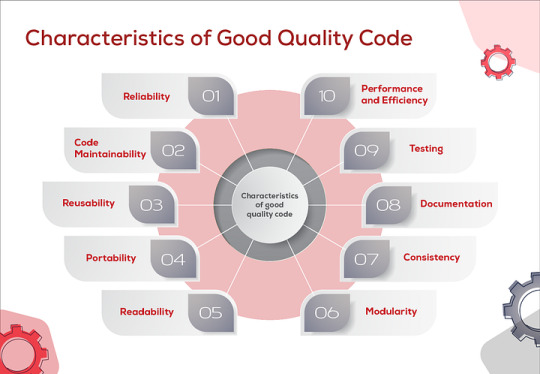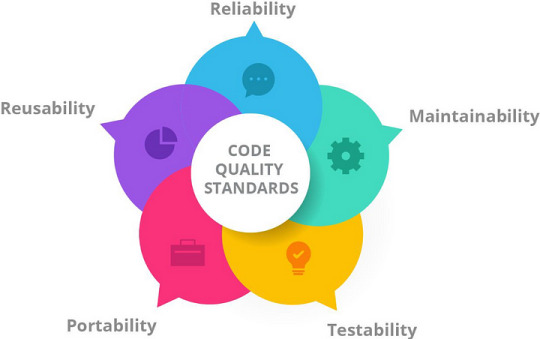#java patterns using for loop
Explore tagged Tumblr posts
Text
"We do what we must, because we can"
Whenever you get an idea, you must ask your self some questions: is this possible? How long would it take? Is it worth it? Should I even do this? However, some ideas politely ignore all of these questions and go straight into action.
Introducing the World Slate:




World Slate, The Great Work, Ghost-Circle, "Sophia why the fuck did you even think of making this," whatever you call it; it is a massive Spell Circle that is approximately 11 thousand blocks by 12 thousand blocks large. This covers about 30% of the overworld of the HexxyTest server.
For those who don't know Spell Circle Tech: a Spell Circle calculates ambit based on how big it could be, rather than based on where it does runs. So you can "trick" a Spell Circle into having a massive ambit by having a looping system that connects to outer "prongs" via a directrix. This is how the World Slate has complete ambit over 30% of the whole overworld. However, there is a large problem, lag.
Spell circles (shouldn't) gain lag while running; since they now, in 1.20, run each pattern while going over them. On the other hand, during a start-up a Spell Circle needs to calculate what slate it can run on, caching it into its NBT data. This seems like it could be a large source of lag, since it's doing a flood fill over possibly thousands of blocks; but, that is only half true. If all the slate blocks are in the same loaded area, the flood fill only takes a few milliseconds, barely anything. But, to get the block data to find where the slate could go, it has to load the chunk the slate in, which is not that bad, IF the slate does not go across ~1400 chunks. Loading, and calculating, that many chunks will lag a server badly (maybe even kill it); so the project seems hopeless.
But, there is a way to fix the lag of loading ~1400 chunks in less than a tick, optimizations.
Since I know Java and some bits about modding, I have been trying to fix some more laggy parts of Spell Circles. I have already fixed a moderate lag source of looping Spell Circles (chunk bans are fun!). So it hypothetically shouldn't be too hard to somehow optimize Slate Discovery.
There are 2 large problems with optimizing Slate Discovery though: How to locate them, and how to store the found slate. The 2nd problem is much easier to solve, rather than storing them in a set of raw Vec3s like it does now, it would be best to compress them down (maybe into a string representation or something) then uncompresses them when it is running. This could be done with a small, quick compression algorithm.

However, optimizing the finding of the slate is another problem. The best system would be finding the slate without loading the chunks, but this is impossible, so we need to use a 2nd method.
That 2nd method would be to break up slate discovery over time, so instead of loading ~1400 chunk all at once, we can just load 200 chunks each tick until we get all ~1400 chunks. This system does have some minor problems, and a big problem. The small problems would be: how to keep discovery going if the server closes, how would you serialize the discovery list, how would you tell the impetus to look over time, etc. And these problems are simple enough; however, the big kicker is that the player could move slate during discovery.

As said by Chloe, people could move the slates in discovery, meaning they could cheat the system by moving the slates while they are being scanned, and still get "world ambit" for about fre. This is, unfortunately, just a problem that would have to be accepted for a system like this.
I do think that flaw can be somewhat ignored though. Since, if you are willing to make a Hex (or a massive contraption) that works every tick to move earth-shattering amounts of slate; then you can have world ambit fuck it.
Or you know, instead of doing this whole massive problem if optimizing slate scanning just do something like re-adding the slate limit
However, if you have any ideas of how Slate Discovery could be optimized; or if I am insane for starting this project; please let me know.
#hex casting#long post#hexcasting#World Slate#HexxyTest#HexxyCraft#Modded Minecraft#minecraft build#coding#java#also#OG use of this was just to have free teleportation and to remove all phantoms from the world#I did not make an EoS on purpose#(EoS is Eye of Sauron; or getting all the truenames of players online)#Holy Fuck#This borderline essay is about 700+ words#all the images also have descriptions!#also also#please skim through this#I am really proud of all of this
20 notes
·
View notes
Text
Morning python study log 03-11-2023
So these days I have started to stream my code study.
So today morning I learnt:
How to take absolute value. Found some anomaly in the system lol. Basically it was not taking abs() but fabs() however my python was the latest version
I studied how to sort three numbers in python, although I have done this in other language since the syntax of python is still foreign to me I had difficulty sorting them in ascending order and also descending order using the built in function sorted() and also making my own implementation
I understood what is range function and how to use it with for loops, had a bit of hit and miss while understanding how it really worked but google's bard helped, I also learnt about reverse sorting
I learnt what is interning while trying to understand the difference between identity operators and equality operators. Found some anomaly in my system again, that my computer's range of interning is much larger than what is documented ?
I learnt what is keyword argument when with using reverse built in sort, yeah so I was amazed that the order of arguments didn't mattered for keyword argument.
I was also confusing syntax of python with javascript since that is what is what recently code in.
Learnt about what does len() function does, like properly rather than just guessing about what it does.
understood about control statements such as if, else and elif
learnt about break and continue in loops in python which is same as java script.
learnt about how to check the divisibility of a number. I didn't knew that it was separate topic in my syllabus I just thought it was something people would knew.
Learnt the basics about on how to make a READ , EVAL PRINT LOOP, REPL
Learnt about stupid pattern program in python, I don't know why the heck they still teach these things and put it in syllabus. There is no real world use of it as far as I can see. I still have to post the notes about it in my blogs and store it my cloud drive.
Learnt how to do a summation of series, using and not using numpy.
figured out how to do a factorial of a number
was trying to make an short algorithm on how to do the fibonacci series but well, I was so sleepy that my mind didn't worked as it should, I took the hint from bard then felt bad that I was directly looking at the solution when rather I should sleep and approach the problem from afresh in next study stream. So stopped my study stream.
youtube
#programmer#studyblr#learning to code#python#coding#progblr#codeblr#programming#code log#study log#studying#Youtube
9 notes
·
View notes
Text
Navigating the Depths of Selenium Testing: A Comprehensive Manual for Test Automation Aficionados
Welcome to the world of Selenium testing, where automation reigns supreme and web applications undergo meticulous scrutiny. As a cornerstone of modern test automation, Selenium empowers testers to automate repetitive tasks, expedite testing cycles, and fortify the reliability of web applications. In this extensive manual, we will delve deep into the intricacies of Selenium testing, exploring its essential components, fundamental concepts, best practices, and the profound impact it wields on software testing.

Understanding the Essence of Selenium: Selenium stands tall as an open-source test automation framework revered for its adaptability and robustness in automating web applications. At its core, Selenium furnishes testers with a suite of tools and libraries, enabling them to interact seamlessly with web elements, replicate user actions, and validate application behavior. With support for an array of programming languages such as Java, Python, C#, and more, Selenium caters to a diverse community of developers and testers, cementing its status as a preferred choice in the realm of software testing.
Critical Components of Selenium: To harness the full potential of Selenium, one must acquaint themselves with its pivotal components:
Selenium IDE: Serving as a user-friendly tool, Selenium Integrated Development Environment (IDE) facilitates the recording, editing, and debugging of test scripts. Available as a browser plugin for Chrome and Firefox, Selenium IDE expedites the process of script generation and rapid prototyping, making it an indispensable asset for both novices and seasoned testers.
Selenium WebDriver: The backbone of Selenium, WebDriver furnishes testers with a potent programming interface for crafting and executing automated tests. With WebDriver, testers can interact directly with web elements using a plethora of commands such as click, type, find element, etc. Its compatibility with various browsers including Chrome, Firefox, Safari, Edge, enables seamless cross-browser testing, enhancing the robustness and reliability of test scripts.
Selenium Grid: Selenium Grid facilitates parallel test execution across multiple browsers and platforms, bolstering test efficiency and scalability. By distributing test scripts across disparate machines, Selenium Grid mitigates test execution time, expedites the feedback loop, and enables teams to deliver high-quality software expeditiously.

Foundational Concepts of Selenium Testing: Embarking on the journey of Selenium testing necessitates a firm grasp of foundational concepts:
Locators: Locators serve as the bedrock for identifying web elements on a web page. Selenium offers a gamut of locator strategies including ID, class name, name, tag name, link text, and XPath. Choosing the appropriate locator strategy is imperative for crafting robust and maintainable test scripts.
WebDriver Commands: WebDriver proffers a rich repertoire of commands for interacting with web elements, navigating pages, managing browser windows, and handling alerts. Acquainting oneself with these commands and their nuances is pivotal for crafting test scripts that are effective and efficient.
Test Framework Integration: Selenium is often integrated with popular test frameworks such as JUnit, TestNG, or NUnit to orchestrate test cases, manage test data, and generate comprehensive test reports. Integrating Selenium with these frameworks streamlines test automation efforts, fosters collaboration among team members, and amplifies the efficacy of test automation initiatives.
Best Practices for Selenium Testing: To optimize the efficacy of Selenium testing, adhering to best practices is indispensable:
Maintainable Test Scripts: Authoring clear, concise, and maintainable test scripts is paramount for ensuring test script longevity and efficacy. Leveraging coding standards and design patterns, and adopting the Page Object Model (POM) aids in enhancing script readability and maintainability.
Test Data Management: Segregating test data from test scripts facilitates data-driven testing and enhances test script scalability and reusability. Harnessing external data sources such as Excel sheets, CSV files, or databases for managing test data fosters agility and resilience across test suites.
Error Handling: Implementing robust error handling mechanisms is imperative for handling unforeseen scenarios gracefully. Employing try-catch blocks and assertions to validate expected outcomes and handle exceptions effectively ensures the reliability and resilience of test scripts.
Conclusion: In conclusion, mastering Selenium testing is a transformative endeavor that equips test automation aficionados with the tools and techniques to navigate the intricacies of software testing with finesse and precision. By comprehending its essential components, foundational concepts, and best practices, testers can harness the full potential of Selenium to streamline testing processes, enhance test coverage, and deliver software products of unparalleled quality. Whether you're a neophyte or a seasoned professional, embarking on the journey of Selenium testing promises to be an enriching and rewarding experience, unlocking boundless opportunities for innovation and growth in the ever-evolving landscape of software development. So, dive into the depths of Selenium testing today and embark on a journey that promises to revolutionize the way you approach software testing forever.
3 notes
·
View notes
Text
Why Java Is Still the King in 2025—and How Cyberinfomines Makes You Job-Ready with It

1. Java in 2025: Still Relevant, Still Dominating Despite the rise of new languages like Python, Go, and Rust, Java is far from dead—it’s actually thriving.
In 2025, Java powers:
40%+ of enterprise backend systems
90% of Android apps
Global banking & fintech infrastructures
E-commerce giants like Amazon, Flipkart & Alibaba
Microservices and cloud-native platforms using Spring Boot
Java is reliable, scalable, and highly in demand. But just learning syntax won’t get you hired. You need hands-on experience, framework expertise, and the ability to solve real-world problems.
That’s exactly what Cyberinfomines delivers.
2. The Problem: Why Most Java Learners Don’t Get Jobs Many students learn Java but still fail to land jobs. Why?
❌ They focus only on theory ❌ They memorize code, don’t build projects ❌ No real understanding of frameworks like Spring Boot ❌ Can’t explain their code in interviews ❌ Lack of problem-solving or debugging skills
That’s where Cyberinfomines’ Training changes the game—we teach Java like it’s used in real companies.
3. How Cyberinfomines Bridges the Gap At Cyberinfomines, we:
✅ Teach Core + Advanced Java with daily coding tasks ✅ Use real-world problem statements (not academic ones) ✅ Give exposure to tools like IntelliJ, Git, Maven ✅ Build full-stack projects using Spring Boot + MySQL ✅ Run mock interviews and HR prep ✅ Help you create a Java portfolio for recruiters
And yes—placement support is part of the package.
4. Java Course Curriculum: Built for the Real World Core Java
Data types, loops, arrays, OOP principles
Exception handling, packages, constructors
File handling & multithreading
Classes vs Interfaces
String manipulation & memory management
Advanced Java
JDBC (Java Database Connectivity)
Servlet Lifecycle
JSP (Java Server Pages)
HTTP Requests & Responses
MVC Design Pattern
Spring Framework + Spring Boot
Dependency Injection & Beans
Spring Data JPA
RESTful API Creation
Security & authentication
Connecting with front-end apps (React/Angular)
Tools Covered
IntelliJ IDEA
Eclipse
Postman
Git & GitHub
MySQL & Hibernate
Live Projects
Library Management System
Employee Leave Tracker
E-Commerce REST API
Blog App with full CRUD
Interview Preparation
DSA using Java
Java-based coding problems
100+ mock interview questions
HR round preparation
Resume writing workshops
5. Who Should Learn Java in 2025? You should choose Java if you are:
A fresher who wants a strong foundation
A non-tech graduate looking to switch to IT
A teacher/trainer who wants to upskill
A professional aiming for backend roles
Someone interested in Android development
A student looking to crack placement drives or government IT jobs
6. Real Success Stories from Our Java Learners
Amit (BSc Graduate) – Now working as a Java backend developer at an IT firm in Pune. Built his confidence with live projects and mock tests.
Pooja (Mechanical Engineer) – Switched from core to IT after completing Cyberinfomines’ Java program. Cracked TCS with flying colors.
Rahul (Dropout) – Didn’t finish college but now works remotely as a freelance Spring Boot developer for a US-based startup.
Every story started with zero coding experience. They ended with real jobs.
7. Top Java Careers in 2025 & Salary Trends In-demand roles include:
Java Backend Developer
Full Stack Developer (Java + React)
Android Developer (Java)
Spring Boot Microservices Architect
QA Automation with Java + Selenium
API Developer (Spring + REST)
Starting salary: ₹4.5 – ₹8 LPA (for freshers with strong skills) Mid-level: ₹10 – ₹20 LPA Freelancers: ₹1,000 – ₹2,500/hour
Java is stable, scalable, and pays well.
8. Certifications, Tools & Practical Add-Ons After training, you’ll earn:
Cyberinfomines Java Developer Certificate
Portfolio with at least 3 GitHub-hosted projects
Proficiency in IntelliJ, Maven, Git, MySQL
Resume aligned with Java job descriptions
Interview recordings and performance feedback
9. What Makes Cyberinfomines Java Training Different
✔ Human mentorship, not just videos ✔ Doubt sessions + code reviews ✔ Classes in Hindi & English ✔ Live assignments + evaluation ✔ Placement-oriented approach ✔ No-nonsense teaching. Only what’s needed for jobs.
We focus on you becoming employable, not just completing a course.
10. Final Words: Code Your Future with Confidence Java in 2025 isn’t just relevant—it’s crucial.
And with Cyberinfomines, you don’t just learn Java.
You learn how to:
Solve real problems
Write clean, scalable code
Work like a developer
Get hired faster
Whether you’re starting fresh or switching paths, our Java course gives you the skills and confidence you need to build a future-proof career.
📞 Have questions? Want to get started?
Contact us today: 📧 [email protected] 📞 +91-8587000904-905, 9643424141 🌐 Visit: www.cyberinfomines.com
0 notes
Text
Unlock the Power of Code: 2025 Rust Programming for Beginners

In 2025, the world of programming continues to evolve rapidly—and if you're searching for a powerful, fast, and reliable language that’s growing in popularity, Rust should be on your radar. Whether you're just starting out or transitioning from another language, Rust Programming for Beginners is the perfect place to begin your journey into systems-level programming, the safe way.
Rust isn’t just another programming language—it’s a revolution. Built with safety, concurrency, and performance at its core, Rust is used by developers at Google, Microsoft, Dropbox, Amazon, and many top-tier companies. If you want a future-proof skill that employers are actively hiring for, learning Rust in 2025 is a smart move.
Why Rust? What Makes It So Special?
Rust was designed to solve real-world programming problems that other languages struggle with. It combines the speed and control of C and C++ with memory safety—without the need for a garbage collector. This makes it ideal for system-level development, embedded systems, and even web development using tools like WebAssembly.
Here’s why Rust is getting the spotlight in 2025:
Memory Safety Without Garbage Collection: Rust’s ownership model ensures that you don’t deal with memory leaks or dangling pointers.
Blazing Fast Performance: Rust code is compiled directly to machine code and optimized for speed.
Concurrency Made Safe: Rust’s approach to multithreading ensures thread safety without sacrificing performance.
Backed by Industry Leaders: Companies like Mozilla, Meta, and AWS use Rust in production.
Growing Community & Ecosystem: Rust’s tooling (Cargo, Clippy, Rustfmt) is modern and developer-friendly.
Who Should Learn Rust in 2025?
If you're wondering whether Rust is right for you, the answer is yes—especially if:
You're a complete beginner with an interest in programming.
You’re a software developer wanting to explore systems programming.
You come from Python, JavaScript, or Java and want a high-performance language.
You’re interested in game development, embedded systems, or WebAssembly.
You want to level up your coding interview game with low-level problem-solving.
No matter your background, you can learn Rust from scratch with the right guidance. That’s where this top-rated beginner course comes in.
Introducing the Best Course: Rust Programming for Beginners
If you're serious about mastering Rust, don’t waste hours jumping from blog to blog or piecing together fragmented tutorials. The Rust Programming for Beginners course offers structured, beginner-friendly training that walks you through everything from basics to hands-on projects.
📌 Course Highlights:
Absolute Beginner-Friendly: No prior programming experience needed.
Step-by-Step Lessons: From variables to control flow, functions to ownership.
Real Projects: Build actual applications to solidify your knowledge.
Lifetime Access: Learn at your own pace, and revisit whenever needed.
Quizzes and Practice Exercises: Test your knowledge as you go.
Certificate of Completion: Showcase your skills on your resume or LinkedIn.
Whether you’re just dabbling or fully committing to Rust, this course makes sure you're not just learning—but actually understanding.
What You'll Learn: From "Hello, World!" to Building Real Projects
This course truly covers everything you need to become productive with Rust. Here’s a quick peek at the modules:
1. Introduction to Rust
History of Rust
Setting up your environment
Understanding Cargo (Rust’s package manager)
2. Basic Programming Concepts
Variables and data types
Functions and control flow
Loops and conditionals
3. Ownership, Borrowing, and Lifetimes
The heart of Rust’s memory safety
Avoiding bugs at compile time
How Rust manages memory differently than other languages
4. Structs and Enums
Data structures in Rust
When to use structs vs. enums
Pattern matching with match
5. Collections and Error Handling
Vectors, HashMaps, and Strings
Option and Result types
Handling errors the Rust way
6. Working with Modules and Crates
Organizing your code
Using external libraries from crates.io
7. Project-Based Learning
Build your own command-line tools
Create a mini web scraper
Start a simple API with Rocket or Actix-web
What Makes This Course Different?
With hundreds of Rust tutorials online, why should you choose this course? Here’s the difference:
✅ Hands-On Approach – You won’t just watch videos; you’ll build real things. ✅ Beginner-Focused – Complex topics are explained simply, with clear visuals. ✅ Updated for 2025 – Content is fresh, aligned with the latest Rust updates. ✅ Trusted Platform – Hosted on Udemy, promoted by Korshub, and trusted by thousands.
Plus, the instructor is known for teaching with clarity, warmth, and energy—making learning Rust genuinely fun.
Real-World Applications of Rust
Wondering what you can actually do with Rust after completing this course?
Here are just a few career paths and domains where Rust is making waves:
🛠️ System-Level Development
Rust is excellent for writing OS-level code, drivers, and performance-critical tools.
🌐 Web Development with WebAssembly
Rust compiles to WebAssembly (WASM), letting you build blazing-fast web apps.
🎮 Game Development
Rust’s performance and safety features make it a great fit for modern game engines.
🔐 Cybersecurity Tools
Rust’s memory safety makes it ideal for building secure applications like firewalls or scanning tools.
🚀 Embedded Systems and IoT
Rust runs on small devices, allowing you to build firmware and IoT projects with confidence.
Testimonials from Learners Like You
“I was completely new to programming, and this course helped me grasp core concepts fast. Rust seemed intimidating until now!” – Ankit, Student
“After taking this course, I landed an internship where they use Rust in production. Couldn’t have done it without this course!” – Priya, Junior Developer
“The project sections made everything click. I finally feel confident with a low-level language like Rust.” – Kevin, Freelance Dev
What’s Next After You Complete the Course?
Learning Rust is a journey—and this course is your foundation. After completing Rust Programming for Beginners, you can:
Dive into intermediate topics like async programming and concurrency.
Contribute to open-source Rust projects on GitHub.
Build performance-critical applications from scratch.
Start freelancing or apply for Rust developer jobs.
And guess what? Rust developers are in high demand in 2025—with salaries averaging $100,000+ globally. So, this isn’t just a learning investment—it’s a career move.
Final Thoughts: Is Rust the Right Choice for You?
If you're looking for a language that combines power, performance, and safety, then Rust is the future. Whether you're planning to become a professional developer or you’re just a curious learner, starting with Rust in 2025 puts you ahead of the curve.
The best part? You don’t have to figure it all out alone.
The Rust Programming for Beginners course provides everything you need to build your skills step-by-step, gain confidence, and start building exciting projects from day one.
So, don’t wait. Learn Rust now and be future-ready.
0 notes
Text
Sweep AI: The Future of Automated Code Refactoring
Introduction to Sweep AI
In today’s digital age, writing and maintaining clean code can wear developers down. Deadlines pile up, bugs pop in, and projects often fall behind. That’s where Sweep AI steps in. It acts as a reliable coding assistant that saves time, boosts productivity, and supports developers by doing the heavy lifting in coding tasks.
This article breaks down everything about Sweep AI, how it helps with code automation, and why many developers choose it as their go-to AI tool.
Understanding Sweep AI
Sweep AI is an open-source AI-powered tool that behaves like a junior developer. It listens to your needs, reads your code, and writes or fixes it accordingly. It can turn bug reports into actual code fixes without needing constant manual guidance.
More importantly, Sweep AI does not cost a dime to start. It’s ideal for teams and solo developers who want to move fast without sacrificing code quality.
How Sweep AI Works
Sweep AI works in a simple yet powerful way. Once a developer writes a feature request or a bug report, the AI jumps into action. Here’s what it usually does:
Reads the existing code
Plans the changes intelligently
Writes pull requests automatically
Updates based on comments or suggestions
Sweep AI also uses popularity ranking to understand which parts of your repository matter the most. It responds to feedback and works closely with developers throughout the code improvement process.
Types of Refactoring Sweeps AI Can Handle
Sweeps AI does not just work on surface-level improvements. It digs deep into the code. Some of its main capabilities include:
Function extraction: breaking large functions into smaller, clearer ones
Renaming variables: making names more meaningful
Removing dead code: getting rid of unused blocks
Code formatting: applying consistent style and spacing
It can also detect complex issues like duplicate logic across files, risky design patterns, and nested loops that slow down performance.
Why Developers Are Turning to Sweeps AI
Many developers use Sweeps AI because it:
Saves time
Reduces human error
Maintains consistent coding standards
Improves software quality
Imagine a junior developer who must refactor 500 lines of spaghetti code. That person might take hours or even days to clean it up. With Sweeps AI, the job could be done in minutes.
Step-by-Step Guide to Start Using Sweep AI
You don’t need to be a tech wizard to get started with Sweep AI. Here are two easy methods:
Install the Sweep AI GitHub App Connects to your repository and starts working almost immediately.
Self-host using Docker Ideal for developers who want more control or need to run it privately.
Sweep AI also shares helpful guides, video tutorials, and documentation to walk users through each step.
The Present and the Future
Right now, Sweeps AI already supports languages like Python, JavaScript, TypeScript, and Java. But the roadmap includes support for C++, PHP, and even legacy languages like COBOL. That shows just how ambitious the project is.
In the coming years, we might see Sweeps AI integrated into platforms like GitHub, VS Code, and JetBrains IDES by default. That means you won’t need to go out of your way to use it will be part of your everyday coding workflow.
How Much Does Sweep AI Cost?
Sweep AI offers a flexible pricing model:
Free Tier – Unlimited GPT-3.5 tickets for all users.
Plus Plan – $120/month includes 30 GPT-4 tickets for more advanced tasks.
GPT-4 Access – Requires users to connect their own Openai API key (charges may apply).
Whether you’re working on a startup project or a large codebase, there’s a plan that fits.
Is Sweep AI Worth It?
Absolutely. Sweep AI is more than just another coding assistant it’s a valuable teammate. It understands what you need, helps you fix problems faster, and lets you focus on what really matters: building great products.
Thanks to its smart features and developer-friendly design, Sweep AI stands out as one of the top AI tools for modern software teams. So, if you haven’t tried it yet, now’s a good time to dive in and take advantage of what it offers.
Frequently Asked Questions
Q: Who is the founder of Sweep AI?
Sweep AI was co-founded by William Suryawan and Kevin Luo, two AI engineers focused on making AI useful for developers by automating common tasks in GitHub.
Q: Is there another AI like Chatgpt?
Yes, there are several AIS similar to Chatgpt, including Claude, Gemini (by Google), Cohere, and Anthropic’s Claude. However, Sweep AI is more focused on code generation and GitHub integrations.
Q: Which AI solves GitHub issues?
Sweep AI is one of the top tools for automatically solving GitHub issues by generating pull requests based on bug reports or feature requests. It acts like a junior developer who understands your project.
Q: What is an AI agent, and how does it work?
An AI agent is a software program that performs tasks autonomously using artificial intelligence. It receives input (like code requests), makes decisions, and performs actions (like fixing bugs or writing code) based on logic and data.
Q: Who is the CEO of Sweep.io?
As of the latest information, Kevin Luo serves as the CEO of Sweep.io, focusing on making AI development tools smarter and more accessible.
0 notes
Text
Why Hire a Clojure Developer? Key Benefits of Using Clojure for Your Next Project

For a web or enterprise application, Clojure may not be the first language that springs to mind. However, it's a strong option for projects that demand simplicity, scalability, and great performance. Hiring Clojure engineers is becoming increasingly popular as more tech businesses look for code that is concurrent, tidy, and maintainable.
Clojure, which is based on the Java Virtual Machine (JVM), combines the flexibility and brevity of a contemporary Lisp with the strength and reliability of Java. Clojure might be just what you need if you are developing a new reactive application, data processing system, or backend.
Modern Performance, Functional Reliability, and Simplicity in One Elegant Language
Clojure is a dynamic, functional language that prioritizes concurrency, simplicity, and immutability. Clojure, in contrast to conventional object-oriented languages, enables programmers to create reliable systems with less complexity and fewer side effects.
Hiring Clojure developers gives you access to a philosophy that prioritizes dependable logic, clear abstractions, and performance under pressure. Clojure's emphasis on pure functions and immutable data structures results in fewer errors and simpler testing.
Top Reasons to Use Clojure in Your Next Project
Immutable by default
Code that is immutable is more predictable. Writing functions that don't change state is encouraged by Clojure, which lowers problems and facilitates debugging and scaling applications.
Seamless Java interoperability
Clojure has complete access to Java libraries and operates on the JVM. This implies that you can write new logic in a more expressive language while utilizing pre-existing Java code.
Concurrency simplified
Concurrency was considered in the design of Clojure. Developers can construct concurrent code without the drawbacks of conventional multithreading by utilizing built-in features such as software transactional memory and agents.
REPL-Driven development
The REPL (Read-Eval-Print Loop) is a tool used by Clojure developers for interactive code writing and testing. Faster feedback loops and more fruitful development sessions are the outcomes of this.
These characteristics are strategic advantages for software organizations that prioritize agility and long-term maintainability.
Finding and Hiring the Right Developer
Hiring Clojure developers with practical experience and a solid foundation in functional programming is crucial because Clojure is a more specialized language than other languages.
They ought to feel at ease collaborating with:
The environment of JVM
Patterns of function and recursion
Frameworks for websites such as Luminus
Data libraries such as ClojureScript (for frontend) or core.async
Be ready to hire remote talent because many highly qualified Clojure professionals prefer working remotely. This broadens your search to include engineers from around the globe who are used to working asynchronously and are frequently involved in open-source groups.
Use an IT Staffing Agency to Simplify the Search
It can be challenging to locate Clojure talent on conventional job boards. Reaching pre-screened developers with the necessary experience might be facilitated by collaborating with an IT staffing agency.
In addition to streamlining the employment process, agencies guarantee that technical proficiency, communication requirements, and cultural fit are fulfilled. This can significantly shorten time-to-hire and boost long-term placement success rates for expanding IT organizations.
Final Thoughts
Clojure is a strategic choice for contemporary, scalable, and maintainable applications; it’s not only a specialized language. Hiring experienced Clojure developers will result in agile development, cleaner code, and long-term dependability.
Clojure provides a sophisticated and practical answer to challenging problems for tech companies willing to look outside the box.
0 notes
Text
Introduction to Core Java: Everything You Need to Know
What is Core Java?
Core Java refers to the fundamental components of the Java programming language, providing the building blocks for developing robust applications. It encompasses essential features such as object-oriented programming, exception handling, multithreading, and data structures. These core concepts form the foundation for advanced Java technologies like Spring, Hibernate, and Microservices.

Why Learn Core Java?
Java remains one of the most in-demand programming languages, widely used in web development, mobile applications, cloud computing, and enterprise software. Mastering Core Java allows developers to create scalable, secure, and efficient applications, making it an essential skill in the tech industry.
Key Features of Core Java
1. Platform Independence
Java's Write Once, Run Anywhere (WORA) capability allows applications to run on any platform that supports Java without modification.
2. Object-Oriented Programming (OOP)
Core Java follows OOP principles, enabling developers to structure code efficiently using concepts like encapsulation, inheritance, polymorphism, and abstraction.
3. Memory Management with JVM
The Java Virtual Machine (JVM) manages memory allocation and garbage collection, ensuring efficient use of system resources.
4. Exception Handling
Java provides a structured way to handle runtime errors using try-catch blocks, preventing unexpected crashes.
5. Multithreading
Java enables concurrent execution of tasks, improving application performance and responsiveness.
6. Rich API & Libraries
Java offers a vast set of built-in libraries for data structures, networking, file handling, and database connectivity.
Core Java Concepts Every Developer Should Know
🔹 Java Syntax & Data Types
Understanding Java's syntax, primitive data types, and control statements is essential for writing efficient code.
🔹 Classes & Objects
Java is a class-based language. Learning how to create and manipulate objects is fundamental.
🔹 Inheritance & Polymorphism
These OOP principles help in code reusability and flexibility.
🔹 Collections Framework
Java provides powerful data structures like ArrayList, HashMap, and LinkedList for handling data efficiently.
🔹 File Handling
Reading and writing files using Java’s I/O Streams is crucial for developing real-world applications.
🔹 Java 8 Features
Features like Lambda Expressions, Streams API, and Functional Interfaces improve code efficiency and readability.
Applications of Core Java
📌 Desktop Applications – Java is used in GUI-based applications like Eclipse IDE and NetBeans. 📌 Web Development – Servlets and JSP enable Java to power dynamic web applications. 📌 Mobile Applications – Android apps are primarily developed using Java. 📌 Enterprise Solutions – Many large-scale systems, like banking applications, rely on Java for security and scalability.
How to Get Started with Core Java?
1️⃣ Install JDK (Java Development Kit) – Download and install the latest JDK from the official Oracle website. 2️⃣ Set Up an IDE – Use Eclipse, IntelliJ IDEA, or NetBeans for writing and testing Java code. 3️⃣ Practice Basic Programs – Start with simple programs like Hello World, loops, and functions. 4️⃣ Work on Small Projects – Build mini-projects like a calculator, to-do list, or file manager. 5️⃣ Explore Advanced Concepts – Learn about multithreading, JDBC, and design patterns to expand your skills.
Final Thoughts
Mastering Core Java opens doors to exciting career opportunities in software development. Whether you're a beginner or an experienced coder, a strong foundation in Java is invaluable for creating scalable and efficient applications. Start learning today, and take the first step toward becoming a Java expert! For More Detail: Core Java Training in KPHB Upcoming Batches: https://linktr.ee/NIT_Training
#CoreJava#JavaProgramming#LearnJava#JavaDeveloper#Coding#Programming#JavaBasics#SoftwareDevelopment#TechLearning#JavaCourse#CodeNewbie#JavaTraining#KPHB#ObjectOrientedProgramming#Java8Features#DeveloperCommunity#CodingLife#ITCareer#TechEducation#ProgrammingForBeginners
0 notes
Text
Share tips for improving code quality and maintainability.

1. Follow Java Naming Conventions
Classes: Use PascalCase for class names (e.g., EmployeeDetails).
Methods/Variables: Use camelCase for method and variable names (e.g., calculateSalary).
Constants: Use uppercase letters with underscores for constants (e.g., MAX_LENGTH).
2. Use Proper Object-Oriented Principles
Encapsulation: Make fields private and provide public getters and setters to access them.
Inheritance: Reuse code via inheritance but avoid deep inheritance hierarchies that can create tightly coupled systems.
Polymorphism: Use polymorphism to extend functionalities without changing existing code.
3. Write Clean and Readable Code
Keep Methods Small: Each method should do one thing and do it well. If a method is too long or does too much, break it down into smaller methods.
Avoid Nested Loops/Conditionals: Too many nested loops or conditionals can make code hard to read. Extract logic into separate methods or use design patterns like the Strategy or State pattern.
4. Use Design Patterns
Leverage proven design patterns like Singleton, Factory, Observer, and Strategy to solve common problems in a standardized, maintainable way.
Avoid overcomplicating things; use patterns only when they add clarity and solve a specific problem.
5. Implement Proper Error Handling
Use exceptions appropriately. Don’t overuse them, and catch only the exceptions you can handle.
Ensure that exceptions are logged for better debugging and auditing.
Use custom exceptions to represent domain-specific issues, so they are easier to debug.
6. Utilize Java’s Stream API
The Stream API (introduced in Java 8) helps reduce boilerplate code when performing collection operations like filtering, mapping, and reducing.
It makes code more concise and expressive, which helps with readability and maintainability.
7. Write Unit Tests
Use JUnit and Mockito for unit testing and mocking dependencies.
Write test cases for all critical methods and components to ensure the behavior is as expected.
Use Test-Driven Development (TDD) to ensure code correctness from the start.
8. Use Dependency Injection
Prefer Dependency Injection (DI) for managing object creation and dependencies. This decouples components and makes testing easier (using tools like Spring Framework or Guice).
DI helps to make your classes more modular and improves maintainability.
9. Avoid Code Duplication
Use methods or utility classes to avoid repeating code.
If the same logic is used in multiple places, refactor it into a single reusable method.
10. Use Annotations
Use Java annotations (like @Override, @NotNull, @Entity, etc.) to improve code clarity and reduce boilerplate code.
Annotations help to enforce business logic and constraints without having to manually check them.
11. Leverage IDE Features
Use tools like IntelliJ IDEA or Eclipse to automatically format code and identify potential issues.
Many IDEs have integrated tools for running tests, refactoring code, and applying coding standards, so make full use of these features.
12. Optimize for Performance Without Sacrificing Readability
Only optimize performance when necessary. Premature optimization can lead to complex code that’s difficult to maintain.
Profile your code to identify bottlenecks, but prioritize clarity and maintainability over micro-optimizations.
13. Implement Proper Logging
Use a logging framework like SLF4J with Logback or Log4j2 for logging. This provides a consistent logging mechanism across the application.
Ensure that logs are meaningful, providing information about the application’s state, errors, and flow, but avoid excessive logging that clutters output.
14. Document Your Code
Use JavaDocs to generate documentation for public methods and classes.
Document not just the what but also the why behind critical decisions in the codebase.
15. Keep Your Codebase Modular
Break your project into smaller, well-defined modules, and avoid large monolithic classes.
Use packages to group related classes, ensuring that each class or module has a single responsibility.
16. Use Static Analysis Tools
Integrate tools like Checkstyle, PMD, and SonarQube to enforce coding standards, detect bugs, and ensure code quality.
These tools help you identify code smells and areas where quality can be improved.

0 notes
Text
Day 03: When Sleep Wins Over the Gym
hello to my non existent audience... I guess humans are weird creatures after all. Anyways not that much movement today I was sleepy the entire day...I don't know what lullaby my professor sang in the last lecture she was unbearable though she explains well. That's why I slept in local train I slept when I reached home I slept almost the whole evening and it was too late for gym. I even missed the annual function of my sister's school she was telling me to come but I was way too tired and out of my mind for that . I could have missed the gym for a way better and fun cause but well sometimes you gotta listen to your body and rest now at 2 in the night I am writing this diary entry .. I did progress in studies though ... I solved 16 pattern questions out of 22 in my tuf+ course. Well pattern questions aren't asked in interview still I practiced to get a practice of loops. I guess my impression in front my DC(Distributed Computing) teacher is not good. What happened is today in the lab we were to perform a basic client server application which uses protoc for communication. without getting much into details ...this protoc needed a plugin for java and I couldn't find it on internet how was I supposed to find it. So I asked her for help and this was her statement - "Code bhi chatgpt se loge sab chatgpt se loge toh rnd kya hoga" but its not like I didn't try I couldn't Well can't do anything she thinks I used chatgpt for everything and didn't understood the experiment but it was not like that although I am not denying the use of chatgpt but it was not all I understood each and everything. I will try to perform better next lab I hope I am just overthinking and she doesn't think of me as bad as I am thinking maybe she was just encouraging me to solve the problem on my own or just didn't wanna help with installation or dependencies I have noticed this about most developers they don't like to solve installation errors or setup things ...including me hehe.. Ok so remember about the mouse I talked about yesterday It is alive and its in my house ....oh my god one problem goes just for another to enter I hope somehow it went away we kept the door open for quite a while so that he could go... but I am scared to even go to bathroom now without the lights Well that's it for today ... nothing new stayed consistent with the course.. gym had a streak break but that's fine will cover up. overall a semi productive day Stay safe and healthy gn and take care
0 notes
Text
Pattern programs in Java are exercises that involve printing various shapes and designs using loops and conditional statements. These programs help developers enhance their logical thinking and problem-solving skills. Common patterns include triangles, squares, and diamond shapes, often created through nested loops, showcasing the versatility of Java in graphical output. Check here to learn more.
0 notes
Text

Lean Java Like A Pro In 5 Simple Steps
Want to lean Java like a pro in five simple steps? Then the first piece of advice is to remember that perfect basic understanding is essential. The student should have some basic knowledge about the variables, data types, loops and conditionals. These mere concepts will make you able to write simple programs and place a good foundation on which things will be built later on.
Step two is to become immersed into object-oriented programming (OOP). Java is object oriented language so class, objects, inheritance polymorphism and encapsulation are essential to understand. This approach emphasizes the reuse of code or the use of the modularity approach that is important when developing actual software.
Then, discover that Java comes with many API libraries and frameworks that you can utilize. Search for classes that are included into Java for data structures (e.g., list, map) and utilitis (file input/output, networking). Knowledge of specific frameworks, such as spring and Hibernate, will also help you to design easily scalable applications.
The fourth step is to write clean and efficient code on student’s own and edit it before proceeding to the next step. Proper formatting of code, readability of code and have realistic approach in handling errors. Follow up the design patterns and tune the algorithms up.
Last of all, practice on routine and carrying out development activities and coding sessions. Creating applications will consolidate your understanding and assist in dealing with real issues. Java is a vast field, and practice makes a man perfect; it comprises encountering lots of errors.
#learnjava#javaprogramming#codinglife#javadeveloper#programmingskills#java#javascript#takeoffupskill
0 notes
Text
Key Concepts to Review Before Your Java Interview
youtube
Java interviews can be both challenging and rewarding, often acting as a gateway to exciting roles in software development. Whether you're applying for an entry-level position or an advanced role, being well-prepared with core concepts is essential. In this guide, we’ll cover key topics to review before your Java interview, ensuring you're confident and ready to impress. Additionally, don't forget to check out this detailed video guide to strengthen your preparation with visual explanations and code demonstrations.
1. Object-Oriented Programming (OOP) Concepts
Java is known for its robust implementation of OOP principles. Before your interview, make sure to have a firm grasp on:
Classes and Objects: Understand how to create and use objects.
Inheritance: Review how subclasses inherit from superclasses, and when to use inheritance.
Polymorphism: Know the difference between compile-time (method overloading) and runtime polymorphism (method overriding).
Abstraction and Encapsulation: Be prepared to explain how and why they are used in Java.
Interview Tip: Be ready to provide examples of how you’ve used these concepts in your projects or coding exercises.
2. Core Java Concepts
In addition to OOP, there are foundational Java topics you need to master:
Data Types and Variables: Understand primitive types (int, double, char, etc.) and how they differ from non-primitive types.
Control Structures: Revise loops (for, while, do-while), conditional statements (if-else, switch-case), and how they control program flow.
Exception Handling: Know how try, catch, finally, and custom exceptions are used to manage errors in Java.
Collections Framework: Familiarize yourself with classes such as ArrayList, HashSet, HashMap, and their interfaces (List, Set, Map).
Interview Tip: Be prepared to discuss the time and space complexities of different collection types.
3. Java Memory Management
Understanding how Java manages memory can set you apart from other candidates:
Heap vs. Stack Memory: Explain the difference and how Java allocates memory.
Garbage Collection: Understand how it works and how to manage memory leaks.
Memory Leaks: Be prepared to discuss common scenarios where memory leaks may occur and how to avoid them.
Interview Tip: You may be asked how to optimize code for better memory management or to explain how Java’s finalize() method works.
4. Multithreading and Concurrency
With modern applications requiring multi-threading for efficient performance, expect questions on:
Threads and the Runnable Interface: Know how to create and run threads.
Thread Lifecycle: Be aware of thread states and what happens during transitions (e.g., from NEW to RUNNABLE).
Synchronization and Deadlocks: Understand how to use synchronized methods and blocks to manage concurrent access, and how deadlocks occur.
Concurrency Utilities: Review tools like ExecutorService, CountDownLatch, and Semaphore.
Interview Tip: Practice writing simple programs demonstrating thread synchronization and handling race conditions.
5. Java 8 Features and Beyond
Many companies expect candidates to be familiar with Java’s evolution, especially from Java 8 onward:
Lambda Expressions: Know how to write concise code with functional programming.
Streams API: Understand how to use streams for data manipulation and processing.
Optional Class: Learn to use Optional for handling null checks effectively.
Date and Time API: Review java.time package for managing date and time operations.
Interview Tip: Be prepared to solve coding problems using Java 8 features to show you’re up-to-date with recent enhancements.
6. Design Patterns
Java interviews often include questions on how to write clean, efficient, and scalable code:
Singleton Pattern: Know how to implement and when to use it.
Factory Pattern: Understand the basics of creating objects without specifying their exact class.
Observer Pattern: Be familiar with the publish-subscribe mechanism.
Decorator and Strategy Patterns: Understand their practical uses.
Interview Tip: Have examples ready that demonstrate how you’ve used these patterns in your projects.
7. Commonly Asked Coding Problems
Prepare by solving coding problems related to:
String Manipulations: Reverse a string, find duplicates, and check for anagrams.
Array Operations: Find the largest/smallest element, rotate arrays, or merge two sorted arrays.
Linked List Questions: Implement basic operations such as reversal, detecting cycles, and finding the middle element.
Sorting and Searching Algorithms: Review quicksort, mergesort, and binary search implementations.
Interview Tip: Practice on platforms like LeetCode or HackerRank to improve your problem-solving skills under time constraints.
Final Preparation Tips
Mock Interviews: Conduct practice interviews with peers or mentors.
Review Your Code: Ensure your past projects and code snippets are polished and ready to discuss.
Brush Up on Basics: Don’t forget to revise simple concepts, as interviews can include questions on any level of difficulty.
For more in-depth preparation, watch this helpful video that provides practical examples and coding tips to boost your confidence.
With these concepts in mind, you'll be well-equipped to handle any Java interview with poise. Good luck!
0 notes
Text
Induwara: Hey Daniel, how's it going? I’ve been diving deep into Java programming lately, and it's pretty interesting. Do you work with Java much? Daniel: Hey Induwara! I'm doing well, thanks for asking. Ah, Java, nice choice! Yeah, I've been working with Java for years, mostly for enterprise applications. It's one of those languages that's just so reliable, you know? Induwara: Absolutely, I can see why it's used so widely. I really like the whole "Write Once, Run Anywhere" concept. The portability is such a game-changer. Daniel: For sure, that's one of Java’s greatest strengths. The JVM really makes it easy to develop software that can run on multiple platforms without too much hassle. Are you working on any specific project with Java? Induwara: Yeah, actually! I’m building a small tool that processes user data and performs some analytics. I’m trying to use Java Streams for data manipulation, but it’s taking me some time to get used to lambda expressions. Daniel: Ah, I get it. Java 8 really changed the way we write code with those features. Streams and lambdas are super powerful once you get the hang of them. They make the code more concise and readable—though it can be a bit tricky at first if you’re used to the old for-loop style. Induwara: Exactly! At first, I was like, "Why would I need all this?" But then I started seeing how much cleaner my code was with lambdas, especially when chaining operations in Streams. Daniel: Yeah, they’re awesome for that. Just wait until you get used to the map() and filter() methods—it becomes so intuitive for data processing. What kind of data are you working with? Induwara: It’s mostly user interaction data, like clicks and time spent on pages. I’m using Streams to filter the data based on certain conditions and then collect some stats. Daniel: That’s a great use case for Streams. You can really cut down the boilerplate code that way. If you need to summarize data, make sure to check out the Collectors class, especially Collectors.groupingBy()—that one’s a lifesaver for grouping and summarizing data. Induwara: Oh, I haven't used groupingBy() yet, but it sounds like it would be helpful. I was actually wondering how to group the data in an efficient way. Thanks for the tip, Daniel! Daniel: Anytime! One thing to keep in mind is that, with Java, you can always balance functional and object-oriented approaches. Streams and lambdas are great, but there are times when the good old-fashioned classes and methods are still the way to go. Induwara: Totally, I think that’s one of the things I like most about Java—it gives you options. You can do things in a more functional way or stick to a traditional object-oriented approach. Daniel: Exactly. That's why it remains so relevant even after almost three decades. Plus, Java keeps evolving. Have you looked into the newer versions, like Java 17? Induwara: A bit, yeah. I read that they’ve introduced some cool features like records and pattern matching. Haven’t really tried them out yet, though. Daniel: Oh, records are great for reducing boilerplate when creating data classes. Java has been moving towards making the developer experience a lot more streamlined while keeping its core strengths. It’s definitely worth playing around with. Induwara: Sounds like I need to catch up on the newer features. Thanks for all the advice, Daniel! It really helps to talk this through with someone who knows the language inside and out. Daniel: Anytime, Induwara. I love talking about Java—it’s a classic! Let me know if you run into any issues, I’d be happy to help out. Happy coding! Induwara: Thanks, Daniel! Will do. Have a great day!
#java beginner#javaprogramming#artists on tumblr#artificial intelligence#nectoy7#technology#convocation
1 note
·
View note
Text
Programming Languages: Navigate Your Way to Coding Mastery
When it comes to mastering programming languages, the journey can feel overwhelming due to the vast array of options available. However, with the right approach, you can effectively navigate this landscape and build your coding skills. Here’s a guide to help you achieve coding mastery:

1. Choose Your First Language Wisely
Start with a beginner-friendly language like Python. Its simple syntax and versatility make it ideal for newcomers. You can explore various domains such as web development, data science, and automation with just one language.
2. Understand the Fundamentals
Regardless of the language you choose, grasping the fundamentals is crucial. Focus on concepts like variables, loops, conditionals, and data structures. These core principles will make learning additional languages easier down the line.
3. Practice Regularly
Coding is a skill best learned through practice. Dedicate time each day to solve problems on platforms like LeetCode or HackerRank. This not only reinforces your learning but also helps you become comfortable with coding challenges.
4. Work on Real Projects
Apply what you've learned by building real projects. Whether it’s a personal website, a simple game, or a data analysis project, hands-on experience is invaluable. It helps solidify your knowledge and boosts your portfolio.
5. Join a Community
Engage with other learners and experienced programmers through online forums, local meetups, or coding boot camps. Communities like Stack Overflow, GitHub, and Reddit can provide support, answer questions, and keep you motivated.
6. Stay Updated
The tech field evolves rapidly, so it’s important to stay informed about new languages and technologies. Follow blogs, podcasts, and YouTube channels dedicated to programming.
7. Explore Advanced Topics
Once you’re comfortable with the basics, delve into advanced concepts like algorithms, data structures, and design patterns. Understanding these topics will elevate your coding skills and prepare you for complex challenges.
8. Learn Additional Languages
After mastering your first language, branch out to others like JavaScript, Java, or C#. Each language has its strengths and can expand your versatility as a developer.
9. Contribute to Open Source
Participating in open-source projects is a great way to gain experience and collaborate with others. Platforms like GitHub host numerous projects looking for contributors, providing a perfect opportunity to learn and grow.
10. Keep a Growth Mindset
Lastly, remember that mastery takes time. Embrace challenges and view setbacks as opportunities to learn. Celebrate small victories along the way to stay motivated.
By following these steps, you can effectively navigate your way to coding mastery. Keep practicing, stay curious, and enjoy the journey!
#Programming #Coding #Python #LearnToCode #SoftwareDevelopment #WebDevelopment #TechCommunity #OpenSource #CodingProjects #GrowthMindset
0 notes
Text
What is Programming? A comprehensive guide
Programming : Programming is the process of designing and building instructions that computers can execute to perform specific tasks or solve particular problems. It involves writing, testing, debugging, and maintaining sets of instructions, known as code, using a programming language. These instructions tell the computer what actions to take, how to perform them, and in what order.
Here’s a comprehensive guide to programming:
Understanding Programming Languages:
Programming languages are formal languages with a set of rules and syntax used to write computer programs.
There are numerous programming languages, each with its own syntax, semantics, and use cases.
Examples include Python, Java, JavaScript, C++, Ruby, and many more.
Basic Concepts:
Variables: Symbols that represent data stored in computer memory.
Data Types: Categories that classify data, such as integers, floating-point numbers, strings, and arrays.
Operators: Symbols used to perform operations on data, like addition, subtraction, comparison, etc.
Control Structures: Constructs for controlling the flow of execution in a program, such as loops and conditionals.
Writing Code:
Start with defining the problem you want to solve or the task you want to accomplish.
Break down the problem into smaller, more manageable steps.
Write code to implement each step, using appropriate data structures and algorithms.
Ensure that your code is clear, concise, and well-organized to make it easier to understand and maintain.
Testing and Debugging:
Testing involves running your program with various inputs to verify that it produces the expected outputs.
Debugging is the process of identifying and fixing errors or bugs in your code.
Techniques include using debugging tools, print statements, and code review.
Software Development Life Cycle (SDLC):

SDLC is a framework that outlines the stages involved in developing software, including planning, analysis, design, implementation, testing, deployment, and maintenance.
Each stage has its own set of activities and goals to ensure the successful development and delivery of software products.
Version Control:
Version control systems like Git help track changes to code, collaborate with others, and manage different versions of a project.
They enable developers to work on the same codebase simultaneously, merge changes, and revert to previous versions if needed.
Advanced Topics:
Object-Oriented Programming (OOP): A programming paradigm based on the concept of “objects” that encapsulate data and behavior.
Functional Programming: A programming paradigm focused on the evaluation of mathematical functions and immutable data.
Algorithms and Data Structures: Techniques for organizing and processing data efficiently, crucial for writing efficient code.
Design Patterns: Reusable solutions to common problems encountered in software design.
Web Development: Building web applications using technologies like HTML, CSS, JavaScript, and frameworks like React, Angular, or Vue.js.
Continuous Learning:
Programming is a rapidly evolving field, so continuous learning is essential to stay updated with new languages, tools, and best practices.
Resources for learning include online tutorials, books, courses, coding bootcamps, and participating in coding communities and forums.
Ethical Considerations:
As a programmer, it’s important to consider the ethical implications of the software you develop.
Respect user privacy, security, and accessibility.
Avoid biases in algorithms and ensure fairness and transparency in your code.
Building Projects:
Practice is key to mastering programming. Start with small projects and gradually tackle more complex ones.
Building projects allows you to apply what you’ve learned, experiment with different technologies, and showcase your skills to potential employers or collaborators.
Programming is a valuable skill with diverse applications across various industries, from software dev
1 note
·
View note